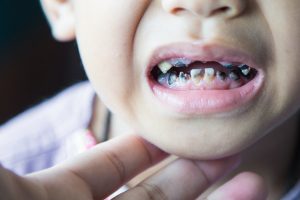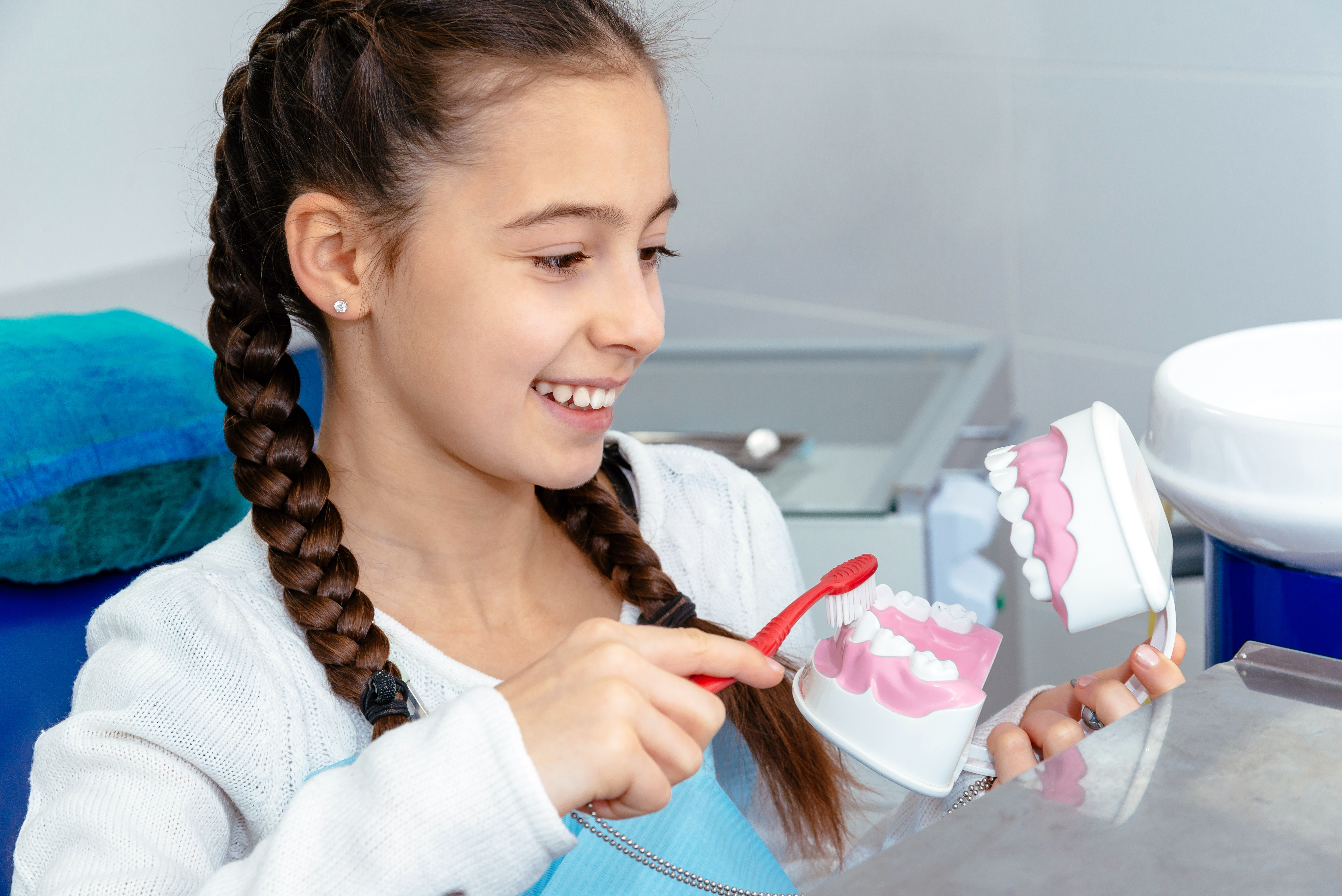Infants, young children, face tooth decay in their milk teeth. That decay is termed as Baby Bottle Tooth Decay.
Reasons for bottle tooth decay
It is caused by prolonged exposure of child’s teeth to liquids containing sugar, for example, milk, fruit juice, sodas and several other sweetened drinks. Sugars in these drinks cover up child’s teeth and gums, and the plaque-causing bacteria in the mouth attack the teeth and the gums. This continues on a daily basis, and after extended attacks, tooth begins to decay.
Breastfeeding babies, who have a habit of prolonged breastfeeding, and those whose pacifiers are immersed in honey, sugar or syrup also face this problem. The sweet fluid remains in the mouth for long hours, especially when the child is sleeping, and tooth and gum decay starts. At night saliva flow is less in the mouth, so the highest risk is in the night.
The area at most risk – Bottle tooth decay affects the top front teeth, but other teeth may also get affected sometimes.

Why worry?
People may think that baby teeth are temporary, and there is no need to worry, but the baby teeth are necessary for chewing, speaking and are prominently visible when the child smiles. They also hold the place for the reserve teeth. If this problem in the teeth is not cured, the child may also face pain and infection. Severely decayed teeth must be removed. In case, if due to this problem teeth are lost too early, or are highly infected, the child may face problems like poor eating habits, crooked teeth, speech problems, and even adult teeth may be damaged. There have been cases when adult teeth were left either crooked or remarkably increased in their size.
Prevention
New York Kids Dentist, Dr. Kimberli Leal shares with us some tips to prevent this condition in babies. They are as follows:
- Use clean gauze pad or washcloth for wiping the baby’s gums after each feeding.
- Maintain cleanliness in areas without teeth also.
- Massage those areas.
- After all the baby teeth have appeared, floss child’s mouth.
- After teeth have come, use fluoride-free toothpaste to brush the teeth. You can even brush without toothpaste, but never avoid brushing.
- Fluoride helps to cure cavities and lessen its chance of growing. Therefore, make sure that child gets enough fluorine. In case, the water supply in your area is fluorine-free, consult your doctor or dentist and ask them, if there is a need for a supplement.
- Dentists offer sealing coatings too, that can help prevent tooth decay.
- Start regular visits the dentist, from the age of 1 year.
- Never give the child sugar water or soft drinks through a bottle, bottles should be used for milk, formula water and an electrolyte containing solutions when the child suffers from diarrhea.
- Don’t let the child sleep with a bottle in his/her Mouth. If the child has a habit of sleeping with the bottle, water can be given.
- Reduce sugar content in child’s diet.
- If plaque is visible on your child’s teeth, visit the dentist at the earliest.
Related Article: 6 Facts you should know before Emergency Root Canal
Age when the child is highly at risk – 18 months to 3years
Symptoms
- Teeth color discoloration is yellowing of the teeth. This happens due to microbial growth which tarnishes the tooth enamel. Black and brown spots appear on the teeth, confirming decay. If not cured on time, the teeth may entirely become black and lastly may fall off.
- There is an accumulation of bacteria near the gums that causes the gums to swell, and they appear red. This is referred to as inflammation of the gums.
- Roots of the teeth get damaged due to bacterial infection, which results in excessive pain. In the initial stages, the child experiences ache only while eating, but later on, as the infection rises pain becomes persistent. This pain hampers eating and even does not let the child take drinks, and thus lets to decline in the health. Pain also causes a disturbance in child’s sleep which again leads to health problems. The child shows mood swings, continuously cries and also has digestion problems.
- The child also loses concentration due to excessive pain and thus, this also hampers his/her learning capacity.

Cure
The extent of the decay decides whether the procedure needs fillings or crowns. A filling can be done, as it is done in case of adult tooth decay, and if many teeth have decayed extensively, the dentist may crown the teeth with stainless steel crowns. If the problem is extreme, the dentist may remove the teeth to prevent the adult tooth from the infection. In this case, the dentist uses a space filler to fill the space until adult tooth grows.
References
- http://en.m.wikipedia.org/wiki/Tooth_decay
- http://kidzsmilecenter.com/decay-prevention-for-children/
- http://www.mouthhealthy.org/en/az-topics/d/decay

